CES 2009
Jan 7, 2009, 10:30 PM by Eric M. Zeman & Rich Brome
updated Jan 10, 2009, 9:09 PM
Live from Vegas. In depth hands-on with the Palm Pre, plus hands-on with watch phones, wireless charging, and new phones from LG, PCD, BlackBerry, Motorola, Sony Ericsson, and more.
Part 1
Intro
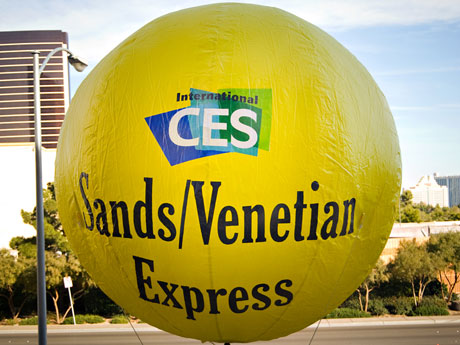
For the sixth consecutive year, the Phone Scoop team is in Las Vegas this week for the mother of tech trade shows: CES. We'll be bringing you extensive hands-on coverage of everything related to cell phones at the show. We'll be hitting the show floor, as well as press events and one-on-one meetings with the major players, in order to bring you everything there is to know. We'll have plenty of photos and videos, of course, as well as live photos and live-blogs of major news as it happens.
This year, we expect big news from Palm. At least, that's what they've promised us, so look for our live-blog of the Palm press conference at 11am (PST) on Thursday. We also expect news from Motorola, T-Mobile, LG, and more.
Be sure to check in through Sunday for additional updates as we scour the show for every last bit of phone news and bring it to you here.
Sony Ericsson
Sony Ericsson has two new mid-range phones to show at CES this year. Both will come in variants for overseas and for the US. The US versions will support HSDPA 850/1900, making them prime candidates for AT&T. As one might expect from Sony Ericsson, there's both a Walkman and a Cyber-Shot model.
The C510 is a thin bar-style phone with a 3.2 megapixel auto-focus camera. Sony Ericsson is quick to point out that this is the most affordable phone to date with a camera worthy of the Cyber-Shot brand.
The C510 feels very nice in hand. It's very thin and solid-feeling. The weight feels about average; not super-light, but perfectly fine. The lens cover on the back is well-built. Sort of like on the C905, Sony Ericsson has found a clever way to design the sliding mechanism that's easy to slide, and feels solid both open and closed, while creating a smooth, clean back when closed. Naturally, opening the lens cover activates camera mode.
The camera works well. It can take up to three seconds to focus, but that's not uncommon for auto-focus camera phones. The two-stage camera key lets you pre-focus, though, so you can capture a particular moment with less wait. The C510 is also Sony Ericsson's first with smile detection.
The keys on the C510 are a mixed bag. The d-pad cluster is great, but the side volume keys are tiny and hard to press. The number keys are okay, although I had trouble with the left and right edges of the number pad. For example, pressing the left half of the 4 key was unreliable. Pressing the right half worked better. Once I adjusted my fingers toward the center of the keypad, texting became easy enough. This is something that could be improved in final hardware, though.
The W508 is Sony Ericsson's new clamshell. Like the C510, its weight is average, but it's impressively thin. The internal display is wonderfully large, and the external display, while monochrome, is extremely clear and easy to read.
The camera on the W508 is 3 megapixel, although its not auto-focus. This impacts quality, although response time is very quick for both photos and video.
Other features include haptic feedback, external touch music keys, and a gesture feature that lets you silence the phone by waving your hand over it.
The downsides of the W508 are in the compromises they made to make it so thin. Specifically, the keypad and battery cover. The d-pad is fine, but the rest of the keys are quite awkward to feel out and press. It's a keypad I could probably get used to, but it would take me a while, and I can't imagine it would ever feel quite right. The side keys are worse. The battery cover is an ultra-thin piece of plastic that latches to the phone in six different places. It's quite an ordeal to remove the cover. It took me about 30 seconds, and I was nervous I was breaking it. Putting the cover back on is equally aggravating.
UPDATE (added Jan 10):
The W508 also features changeable covers. They're just as tricky to snap on and off as the battery cover.
INQ
A nifty little surprise popped up at CES this year, a nice little phone from INQ ("ink", not I-N-Q). The INQ phone's claim to fame is that it is a "Facebook phone." The INQ1 is already being pushed by Hutchison's 3 subsidiary over in Europe to social-networking-crazy teens. It is now pushing to get some support from GSM carriers here in the U.S.
The hardware itself is better than many entry-level phones being offered by major handset manufactures. It is a slider with a good screen and solid build quality. The spring-assisted slide mechanism was smooth and snapped up smartly. The keypad was comfortable to use and the keys had good travel and feedback. According to the representatives that we spoke to, the phone is manufactured by Chinese ODMs. Whoever put it together did a good job. Everything about it is tight.
The user interface takes a unique approach to providing mobile services and access to social networking. The basic user inteface consists of a carousel along the bottom. You scroll through the carousel sideways to access the phone's different features. The carousel is populated with access to applications such as Facebook, eBay, Skype, Windows Live Messenger, etc. The Facebook application is a core feature and integrates into the phone's contact application and so on.
It is a 3G device, packing in HSDPA. Right now, INQ is hoping to get it placed at any U.S. carrier, whether that be pre-paid or post-paid. The price point is targeted at $100, which is very fair considering all that you get.
Motorola
Motorola's major phone announcement at CES was the MOTOSURF A3100, a unique phone that combines Ming heritage, Windows Mobile, and a form factor that looks like an oval iPhone.
The hardware of the Surf is quite respectable, although no features really stand out as super-impressive. The spec sheet includes quad-band GSM, tri-band HSDPA/HSUPA (including 850/1900 for the US), WiFi, GPS, and a 3 megapixel auto-focus camera. The display is QVGA. A higher-resolution camera or display might have added a little wow factor, but the specs ares still nothing to sneeze at.
The body is about average. It's not huge nor small, light nor excessively heavy. It is very, very rounded. The build quality seems fine, except for the send/end keys, which feel a bit cheap.
Like everyone and their mother making a Windows Mobile these days, Motorola has a new "top layer" UI to make basic features easier to use than stock Windows Mobile. It uses simple four-way navigation that can be used very quickly and easily with the trackball. We've seen that on Windows Mobile Standard devices, but this is a Windows Mobile Pro phone with a touch screen. Motorola's interface is also finger-friendly, of course, and having that option of finger touch or the trackball is nice.
Motorola's UI has a simple row of icons across the bottom (much like TouchFLO 3D) that you can scroll through to pick a screen. Some screens have their own settings menu, which is also finger-friendly.
Unfortunately, once you leave Motorola's UI, everything is standard Windows Mobile. There are no special finger-friendly versions of full applications like on Samsung's Omnia.
With full support for AT&T's 3G network, you'd think the SURF was headed for the US, but Motorola says the jury's still out on that. For now it's only confirmed for Asia.
Motorola also announced the W233 Renew for T-Mobile. This is a very entry-level phone, although it does have a music player and memory card slot. The headline feature, though, is the eco-love. This phone uses recycled and earth-friendly materials in the phone itself as well as the packaging. It also has an extra-efficient charger.
The Renew looks and feels good physically. The one major drag is that the screen is about as small and dim as they come these days.
We also had our first hands-on time with Motorola's new luxury phone, the Aura. This status symbol contains the kind of extravagant technology and materials that only $2000 can buy, including an ultra-high-resolution circular display and a watch-quality spinner mechanism that would make the Swiss proud, complete with a window to watch the gears spin. The mechanism exudes quality in both appearance and feel of the action.
The display is beyond gorgeous. The circular shape, lens-shaped curved glass, high resolution, and beautiful graphics all come together to create something that looks like Hollywood special effects come to life.
The phone is small, but heavy. That's fine for a phone of this type, where - if you spent that much money - the last thing you want is a phone so light it feels cheap. Far from it, you will be reminded every time you pick it up that it is crafted from solid stainless steel.
The Aura does have one small flaw, and that is the d-pad... if you could call it that. The circular control centered below the display is a four-way d-pad, but its small size hinders usability a bit. It works, it's just not the pleasure to use that we would expect from a phone of this caliber. More seriously, you can not press down in the center to select something, as is standard on most phones. Rather, you must press the separate "OK" key on the left. This action is not physically intuitive, and mars what would otherwise be a luscious experience. It's certainly something most people would adjust to over time, but it's a clear case of form at the expense of function that would annoy any usability purist.
Fortunately, the rest of the keys functioned admirably for us, and the experience in general was fun and satisfying. If you want a phone that looks like something from the future, and don't mind paying a hefty time-travel tax, the Aura is worth a look.
Nokia
Nokia had several new handsets on display at CES. None of them were top-of-the-line killer phones, but each fit its niche well.
First up is the 7510 for T-Mobile. This clamshell was first announced in June 2008, but T-Mobile is just getting around to carrying it. It has a spring-loaded hinge that will pop open the phone at the press of a button. It wasn't exactly smooth. The button itself (located on the side of the phone) was difficult to press, and when you pressed it, the pressure of your finger often prohibited the phone from opening properly.
Both the top and bottom halves of the phone have removable and interchangeable plates. The 7510 comes packaged with several different colored plates, so users can customize it a bit at will. The plates are covered in a soft-touch paint job that feels good in the hand. The 7510 is a bit heavier than you expect it to be. The amount of metal in the hinge mechanism really adds to the weight. It is comfortable to hold in your hand when open or closed. The width and thickness is good, and it fits snugly in your palm.
The keypad of the 7510 reminds me very much of the keypad on the N75. It is smooth, and coated in a reflective surface. It is also well spaced, with plenty of room to move your thumb around for dialing. The downside is that the travel and feedback of the buttons was not good at all. The buttons all felt mushy, with no distinct way to tell when you had actually pressed the button.
The control keys and the D-pad were worse than the number keys. In fact, the D-pad was so mushy I couldn't tell when I had pressed it at all. This phone has been shipping in other countries for months, so we're going to chalk it up to a badly overused demo unit rather than a bad phone design.
The display was generously large and looked really good. It was one of the better displays we've seen on a Series 40 phone from Nokia. It was bright, vibrant and sharp. Icons, menus and text looked really good on the 7510. The menus and functions of the phone were responsive and fast to load. The phone didn't hang up or crash at all.
We were disappointed to see that the 7510 has a 2.5mm headset jack, but it comes with a microUSB jack for transferring data and support for microSD cards.
In all, the 7510 isn't a bad phone at all. If you're looking for a capable feature phone that isn't too expensive but offers a decent feature set, the 7510 fits the bill well.
The 1006 is an entry-level bar phone for CDMA networks. Since it supports AWS bands, it is likely to appear at MetroPCS or other similar regional carriers that have 1700MHz spectrum. I have to say, for an entry-level device, it is one of the most appealing that Nokia has churned out in a long time.
The phone is slightly curved and has a completely smooth backplate. It is very comfortable to hold. The combination of the shape, smoothness, weight and thickness is excellent. The backplate has a soft-touch paint job. Despite being a small, thin phone, the 1006 has a decent keypad and set of control keys. The number buttons had good travel and feedback. I would have preferred that they had more shape/contour to them, but overall they weren't bad.
As far as the design goes, it obviously takes cues from the current N series lineup, with the black faceplate and silver-colored bevel.
The 1006's weakness is definitely the display. The resolution is low enough that you notice the jagged edges of icons and text. It is also small, and I didn't think it was bright enough. It also lacks pretty much any feature you might actually want, such as a camera.
For an entry-leve device, the Nokia 1006 offers a lot of sex appeal and comfort.
HTC
The only new HTC phone on site was the new HTC Shadow. (Not the Shadow II, just a refreshed version of the Shadow.) In many respects, the new verions is almost identical to the original, but it's really not.
The Shadow is a slider. The size is pretty much unchanged from the original. It is not too small, not too large. The weight is nice and the materials feel good. It is comfortable to hold and use. The slider mechanism works well, and slides up smoothly with no looseness or play in the hinge. The display is large, bright, and has great resolution.
The D-pad feels like it has been somewhat revised. According to the HTC reps we spoke to, most of the Shadow's innards have been improved. That means a faster processor, more memory and so on. The result is a much more responsive phone. The original Shadow had a noticable lag when you tried to use the scroll wheel to interact with the menu system. On the new version, there is no lag at all. Everything works much faster and smoother.
Speaking of the user interface, it is nearly identical. It is a Windows Mobile Standard 6.1 phone (an upgrade from WinMo 6.0), but it does not use HTC's TouchFLO. Instead, it has a vertical carousel. The carousel items hold different items such as Internet, Messaging, Calls, etc. Once one has been selected, you can slide sideways through a number of different selections in each menu item. In messaging, for example, this means switching between text messaging, the inbox, email, IM, and so on. This UI is a lot more repsonsive than the original Shadow, and that makes the whole experience better.
The Shadow's SureType-esque 20-key keyboard offers an experience similar to the RIM BlackBerry Pearl. There are two letters per key, and the phone's software figures out what you're typing as you go. It was solid and I didn't notice any weird errors as I typed out some test messages. The keys have nice contour and are distinct as you pass your thumb over them. They are coated in a soft-touch paint job. I found the 20-key layout very comfortable to use and I was able to peck out messages very quickly with few, if any, errors.
HTC has done a great job updating the Shadow. With the improved processor power and memory, it is a solid improvement over the original.
Part 2
Palm Pre
By far the biggest phone news of CES is Palm's new Web OS, and the first device to run it, the "Pre".
With the Web OS and Pre, you'll find plenty of inspiration from devices the iPhone and Android. For example, like the iPhone 3G, the face consists only of a large multi-touch capacitive touch screen and a single button. Like Android, a swipe motion from the bottom of the screen brings up the main launcher menu, and there's an expanding notification area on all screens.
You'll also find features like an accelerometer, proximity sensor for your face, and a light sensor for auto-adjusting screen brightness. Also in the spec department, you'll find a 3-megapixel camera, GPS, WiFi, stereo Bluetooth, and 8 GB of internal storage memory.
What really sets it apart from the iPhone, though, is the slide-out QWERTY keyboard and removable battery. (The keyboard is small but decent; it's based on the Centro's.) Some other competing phones have these features, but not in a body as small as the Pre. It's impressively small and light. Standard microUSB (with mass storage mode) and 3.5mm audio jacks further separate it from certain competitors. Palm really went down the checklist of competitors' weaknesses and made sure the Pre delivered what the competition missed.
There's also a decent amount of innovation that's truly new and unique. For example, the capacitive touch area extends below the display, enabling certain universal swipe gestures that you can activate quickly and reliably without worrying you'll press the wrong thing on the display instead. For example, instead of a "back" button, just swipe your finger right to left across the bottom of the phone.
The OS is called "Web OS" for a reason. The OS itself is based on Linux, but native applications running on Web OS are simply web pages written in HTML, CSS, and JavaScript. The WebKit browser rendering engine powers this.
Palm says they have added extensive APIs to the JavaScript engine to allow Web OS applications to do everything native apps can do on other smartphone platforms. We're skeptical of that. It's hard to imagine how Web OS games, in particular, could possibly rival games on other platforms, especially since there is no support for Adobe Flash, nor any support for 3D graphics.
Ultimately, we're anxious to hear what professional developers have to say after they've had some time to tinker with it. There's a lot of potential for Web OS to lower barriers and enable scores of new developers to create nifty apps. However there's just as much potential for the platform to prove too limited for developers to create truly robust, powerful apps and games.
Old Palm OS applications won't work on Web OS directly, but Palm did say that a third party developer is working on an emulator to enable such compatibility.
With Web OS, Palm has tried to create a new metaphor for managing applications and multi-tasking. The concept revolves around "cards". Each "card" is a running application. Some applications - such as mail and the browser - can have multiple cards open at once. To manage cards, simply press the single button on the front. The current card shrinks to the center, and edges of other cards appear on the left and right. Swipe left or right to switch cards, then tap the one you want to switch to. It's exactly like multiple tabs/windows in Safari on the iPhone, but for the whole OS.
The OS does multi-tasking, so all open cards are applications running simultaneously. Swipe a card up off the top of the screen to quit that app.
Apps can pop up notifications at the bottom of the screen, which pop up just large enough to show you what you need to know, but don't interrupt what you're doing. The current app/card shrinks to make room, so notifications never cover something important. After a few seconds, the notification shrinks to a small icon bar, which you can tap to recall notifications.
Curiously, the notification bar is also used for certain non-notification things running in the background, such as the music player.
The home screen has a row of five icons across the bottom, for your four favorite apps, plus an icon for the Launcher, which contains the rest of your apps. If you're not on the home screen, you can bring up this quick-launch bar at any time by dragging your finger up from below the screen and holding. This displays a ridiculously slick "flowing" shortcut bar that follows your finger.
The full Launcher can be accessed at any time with a quick swipe up from below the screen (without holding). Like the iPhone, you can have multiple "pages" of apps. Unlike the iPhone, there is no limit; you can also scroll down if all of the apps on that page don't fit on the screen.
The touch and multi-touch aspects of Web OS mimic the iPhone to a tee. It's rather blatant, but to be honest, it's one thing Apple nailed, so in this case I'm grateful for the shameless copying. Any scrolling can be done with simple swipe/flick motions, and the motion is smooth and intuitive. The famous two-finger pinch zoom works in the browser and photos. You can also double-tap to zoom in, and double-tap with two fingers to zoom out, just like on the iPhone. One curious twist is that a white circle appears below your finger any time you touch the screen, as visual feedback.
One of Palm's strengths has always been the PDA basics: contacts, calendar, and sync. With Web OS, Palm appears to be on track to continue that leadership, while adding integration with Web 2.0 services such as GMail and Facebook. A Pre will still do Microsoft Exchange, of course, but now you can integrate with the these other services as well.
All of your data from the various services is presented in one unified interface on the Pre, and syncs over the air, yet it won't cause your Facebook account to fill up with Exchange data, for example. There are also tools to filter, so you can just view your work calendar, for example, yet it will still show you times when you are busy or free based on all calendars. Based on the demos we saw, there are a lot of thoughtful touches like this in contacts, calendar, and mail.
There is a unified messaging app that combines SMS with IM - all threaded, of course - yet is curiously separate from email.
The unified search feature is quite well done. If you simply slide open the keyboard and start typing, it will search everything on your phone and display results as you type. You can also turn it into a web search with one tap. It's quite slick.
There is a document viewer for MS Office and PDF documents, and of course photo and video viewer apps. There is not, however, a file manager included. Since it support mass storage mode, though, you can connect it to you PC to manage files any way you want.
One last innovation is the wireless charging. You can simply place the Pre on a special puck, and it starts charging with no wires or connections of any kind. If the phone rings, simply pick it up to answer, or leave it on your desk and tap "answer", and will automatically use speakerphone mode.
There are some key omissions in the Pre. Although you get 8 GB of memory to play with, there is no memory card slot to add more. There's also no video capture, and, as we mentioned, no Flash or 3D support. The Bluetooth profiles are also limited to audio - there's no OBEX, for example.
However, the Pre does support firmware updates over the air, and Palm indicated to us that things like video capture and additional Bluetooth profiles might be added after launch. The same thing is happening with the G1 and Android, so this "we'll-add-it-later" approach isn't unique among all-new OSes.
The first Pre will come out by June for Sprint. It sports EVDO Rev A, naturally. A version for GSM/WCDMA will follow soon after, or as soon as Sprint's exclusivity expires.
In general, both the hardware and software of the Pre are impressive. Neither is perfect, but I didn't see any deal-breakers, either. There are some really great ideas here, and it's definitely put Palm back into the game.
Here is a video tour of the Palm Pre:
Liveblog
(Photos at the bottom.)
Touch based, smooth has a camera, EVDO REV a Wi-Fi, GPS, 8GB storage, stereo Bluetooth, and a fast processor.
Experience is more important than the specs.
Rubinstein introduced Palm CEO Ed Colligan. Loud cheers.
This page is our live minute-by-minute report from the Palm press conference at CES. Check back often for updates throughout the next couple of hours.
Curve 8900
We had some time to spend with the latest little smartphone from RIM, the BlackBerry 8900. It is very similar in shape, size and appearance to the existing Curve lineup. It is a bit thinner. It is very lightweight. You could put it in your pocket and forget that it is there.
The thinner profile and lack of heft make the 8900 feel good in your hand. It is easy to grasp and reach the controls one handed. It carries over the trackball from other 'Berries for navigation, but the function keys and keyboard have been redesigned a bit. The keys are all a bit smaller than on the Curves. This is the most cramped I've ever felt using a keyboard on a BlackBerry perhaps aside from the Pearl. The buttons on the QWERTY have sloped surfaces and are made of glossy plastic. Typing felt okay, but not great. I don't know if RIM had a pre-production unit or not, but the buttons didn't have the best travel and feedback. They were a little mushy.
The rest of the controls and buttons, such as the camera key and voice key on the sides of the 8900, felt good and worked well, with satisfying travel and feedback. One thing to note. The trackball on the 8900 doesn't light up. It's black. The trackball on the Pearl and every other track-ball equipped BlackBerry lights up so you can see it. Not so with the 8900. RIM couldn't tell us why the 8900 was built that way.
The 8900 uses the current generation of BlackBerry OS, which includes the revised media applications, improved icons and themes. There are several applications placed at the bottom of the screen, and hitting the BlackBerry key (to the left of the trackball) opens up the full menu.
The media player has the same refreshed UI with nice icons and graphics that are seen on the Bold. Sorting through your playlists and such is a breeze. The camera software has been upgraded modestly, with better zoom functionality. The gallery app is also usable.
The browser and mapping application are both quite good. The trackball is put to very good use, with most zoom and scroll action functioning intuitively without your thumb ever leaving the trackball. In the maps, clicking the trackball toggles between panning and zoom modes.
A cursor in the browser lets you scroll around and click on any area to zoom in. The rendering comes close to a desktop version, except the text size is cranked up quite a bit to make everything easier to read. That's fine for many sites, but can cause the layout to get funky on other sites. A smart zooming causes text columns to fill the screen perfectly with one click.
Still, the basic experience you get with the 8900 is much closer to that of a feature phone, than with a business device that has some features slapped in for good measure. The multimedia functions feel like less of an afterthought. That's a good thing.
I wish the hardware didn't come off so cheap feeling, but overall, the 8900 is a solid entry into the BlackBerry family.
Here is a short video tour of the 8900:
Moto Tundra
The VA76r is a rugged clamshell PTT phone for GSM/WCDMA networks. AT&T will be launching it as the Tundra on January 13th. (Rogers in Canada already sells it as the Extreme.)
The Tundra is rated to military specs for drops, dust, vibration, humidity, severe temperatures and rain, and indeed it feels as rugged and solid as it claims to be. The extra layer of armor does add to size, though; it's definitely a large sucker. At least with a true rubber grip cladding most of the outside, you're unlikely to drop it.
Motorola claims the keypad is designed to be usable with gloves on, and indeed most of the keys are large very easy to use. It's a great keypad. The d-pad is a little sunken and that feels awkward, but we had no trouble pressing it correctly, at least with our bare hands.
The main display is huge and bright. With QVGA resolution, it's quite clear, too. Unfortunately, the outer display is not as nice. In fact, it's terrible. It's about as small and dim as they come. That's unfortunate, because the display is supposed to be used to quickly choose contacts to walkie-talkie.
The Tundra runs Motorola's Linux-Java platform. This provides a more modern interface than some other Motorolas. The phone is also 3G, offering services like streaming video (Cellular Video on AT&T.) Like more and more AT&T phones, it also sports GPS navigation.
LG Watch
Unfortunately, there was no such thing as "hands-on" time with the LG GDP910 Watch Phone. LG's press reps had one on their wrist, but wouldn't take it off, nor would they let anyone else touch it. That said, it's pretty cool.
The GDP910 is stylish. It is mostly black, with silver accents. At first glance, it may not catch your attention, but if you look at it longe enough, you'll see the appeal it has.
The GDP910 is a quad-band GSM/EDGE phone that is controled by a touch screen user interface. Looking at the UI, it reminds us a lot of the UI on other LG phones such as the Dare, Voyager, and so on. The LG staffers wouldn't let us see what touch actions are needed to control the phone and transition between different screens on the phone. They wouldn't let us capture that on video, either, which was a bit frustrating.
The basic screen is an analog clock. It can also be set to show a large digital read-out of the time. The main menu has 6 items in it, for dialing, contacts, messaging, etc. You simply press the application you want to open, and it pops up.
The software dialpad is of the 12-key variety, and it has a little read-out above the keypad so you can see what you're typing. When you're done typing, there's a send button to make the call.
The watch itself is large. LG made it large so that the screen could be as big as possible. Since we couldn't touch it, or hold it, we have no idea how heavy it feels on your arm. It will definitely stand out, though, due to its large size. The strap appears to be made a thick rubber/plastic material.
We'd like to be able to tell you a lot more about it, but without the opportunity to really play with it, there's not much more we can say. You can, however watch a short video tour here:
Logic Bolt
We spent just a few short moments with the Logic Wireless Bolt, a projector phone. The phone itself is huge and heavy. It is thick around the middle and bulky, bulky, bulky. It will not go easily into a pocket. If you're foolish enough to put it there, it is going to weigh you down like an anchor.
The plastics feel a bit on the cheap side and are clearly not final production quality. In fact, this phone had seen serious action, and had a gaping hole in the bottom where it had apparently been dropped.
There is a volume toggle on the left side of the phone and two microUSB ports on the right side. The Bolt has a decent touch screen on the front of the device that lets you interact with the menu system. The menu system is a series of icons that you press to open. You can also choose to use the D-pad instead. The D-pad and function buttons around it felt a bit mushy to us, and weren't all that responsive on the screen. The number keys felt a little bit better.
At the top end of the phone is a hole where the lamp is placed. There are lots of vents and slots near the lamp, but there are no fans used to cool it. It relies on natural airflow alone to prevent the lamp from overheating.
According to Logic, the basic usage scenario envisioned is for professionals to show slide shows or presentations to colleagues or business partners. For that purpose, it certainly gets the job done. It can project a nice, sharp image ranging from 36 to 64 inches, though the Logic people told us you can go much bigger than that it dark rooms.
Because the room we saw the demonstration in was so bright, it was hard to guage how good the quality of the projector really is. You can see in our video (below) that you can barely see the projection at all. We'll reserve final judgement until we see a demo in a dimly lit or dark room.
Logic said that the quad-band GSM/EDGE phone will be available in the spring.
You can watch a short video tour here:
Part 3
PCD
PCD (previously UTStarcom) didn't have much new on hand that we could touch, but they did have one new phone behind glass, and another similar model displayed on a banner. Both are follow-ups to the Blitz / TXT8010.
PCD told us that the Blitz has sold extremely well with Verizon, so it's no surprise that there's a follow-up model, although it's impressive how quickly they're bringing the new one to market. The Blitz hit shelves in August, and already the new models - the TXT8020 and TXT8021 - are expected to come out in the current (first) quarter.
The TXT8020 is the one we know the most about. It has a new body that's narrower, taller, and much, much sleeker. The display also swivels instead of slides; the swivel action works much the same way as LG's VX-9400. This means the display is in portrait orientation when closed, and landscape when open to reveal the QWERTY keyboard.
In terms of features, the TXT8020 adds EVDO data, so opening the phone will be useful not only for messaging, but also for viewing streaming video full-screen. Also new is a text-to-speech function that can read your text messages aloud to you. Otherwise, the specs are nearly identical to the Blitz.
Less is known about the TXT8021, since they didn't have a physical unit on display, nor were spec sheets available. The form factor is a slider just like the Blitz, although the design is clearly much sleeker.
Samsung
Samsung had only a few new products on hand at CES.
First up is the T119 for T-Mobile. This entry-level bar-style phone covers the basics and not much else.
It is small and comfortable to hold. It has very little weight, and the diminutive form factor makes it a snap to put into your pocket. The back of the T119 has a soft-touch paint job, so it shouldn't slip out of your hand.
The display is a bit on the small side, and also doesn't have the best screen quality we've ever seen. It is just barely large enough to display the nine icons in the basic T-Mobile menu system. All the icons showed pixelated edges. It also wasn't a very bright display.
The soft keys and send/end keys below the screen feel good. All four keys have good travel and feedback. The D-pad was a little less responsive. In fact, it was downright bad.
The dialpad itself was comfortable and felt great. The keys are covered with a soft-touch paint and that made them just grippy enough so that your fingers didn't slide around on the keys. It is also well spread out. Your thumb doesn't have to travel too far to hit the keys, nor does it feel squished.
Other than that, there's not much else to say. It has access to T'Zones, simple messaging services, and that's about it. Check it out at T-Mobile if you're in need of a phone that will mainly be used for calling.
You can watch a video tour of the T119 here:
Samsung also had its new pico projector and was demonstrating how well it works.
This accessory can project video onto a screen so users can share content with a group of people more easily. The MBP200 is a blocky piece of hardware. It is rectangular and has sharp edges all the way around.
The front is dominated by a large viewing screen and the control pad. The screen is fine for viewing content, but obviously that's sort of missing the whole point of the device.
Below the screen is a 4-way directional pad for interacting with the menus, with some control buttons below that.
The lamp itself is carefully packed into the side of the projector and has a sliding hatch that protects it from injury. The bottom of the projector is where you'll find a sliding lock key and a 3.5mm headset jack.
The projected images we saw weren't all that great, but we were in a well-lit room. We didn't have a chance to see how it performs in darker environments. According to Samsung, the largest image it can project is about 50 inches in diameter. The demonstration was showing an image close to about 36 inches. It looked reasonable sharp, and the colors were accurate, but the brightness was just not there in the room with the lights on.
The MBP200 uses microSD for storage and supports cards up to 16GB. It can be used to view files, documents, pictures, and videos. It also supports music playback and can be used as a personal media player.
Last up is the new r470 TwoStep for U.S. Cellular. Samsung didn't have this phone on site, but it was officially announced during the show.
It is a simple flip phone that has external music controls and stereo speakers, as well as a 3.5mm headset jack, Bluetooth, and it supports microSD cards up to 8GB.
Moto overseas
First, we were given some release info for the EM25 and EM28, which we covered at the recent CTIA fall show. Both are currently slated for release with a US carrier in late March.
Motorola was also showing off some interesting new phones that aren't currently slated for US carriers, but could certainly be imported and used here, since they're both quad-band.
The VE66 is a 5-megapixel camera phone with auto-focus and a large LED flash. It runs Motorola's Java-Linux platform and sports the "omega wheel" touch-scroll feature around the edge of the d-pad. There's no standard audio jack, but this isn't a ROKR, so Motorola would say music simply isn't the focus of this model. It does have a true sliding lock switch, however, so you can prevent accidental key presses in your pocket. This is something usually found on music phones, but it's a nice touch on any phone.
The VE66 generally feels nice, although it's slightly thicker than we hoped. The keys surrounding the d-pad may look like touch keys, but they're not. All of the keys are physical, and work well. The number pad would be great, if it didn't have a gummy rubber coating on it. This "grippy" material makes it difficult to text quickly with one hand. You can't glide your finger across the keypad; rather, you have to deliberately life your finger up after each key press to move to another key. It seems like this would be frustrating for any heavy texter.
The ROKR EM35 is a music phone that well-rounded in both appearance and features. It's much like the VE66, but with a music focus.
Like the VE66, the ROKR EM35 runs the Java-Linux platform, has an Omega touch wheel, and a sliding lock switch.
Unfortunately, just like the VE66, it also has the grippy rubber coating on the number keys that slows down texting. The other keys are all great, though, including the dedicated music keys near the bottom. Since this is a ROKR, there is a 3.5mm audio jack, stereo Bluetooth, and a hot-swappable memory card slot. A 3-megapixel camera and QVGA display are thrown in for good measure.
Other than the odd keypad material, our first impression is that the EM35 seems like a really great phone. It has a nice mix of features, a good feel to it, and a stylish design. It's a shame no US carrier has picked it up yet.
Pharos
Pharos was showing off a new Windows Mobile device. It's a relatively stylish number with a trackball. It's clear that Pharos and Velocity Mobile share the same manufacturer.
The Traveler 137 is, for the most part, a perfectly predictable Windows Mobile Pro slab-style device. The one stand-out spec is support for T-Mobile USA's 3G network.
The big news from Pharos, though, was the way their navigation software works. First, like a stand-alone GPS unit, you can buy full maps packages for whole countries, and have full GPS functionality even when you have no network signal at all.
The more interesting capability, though, is the on-demand aspect. If you didn't buy the full map pack, or you're visiting a different country, you can use it just as much as you need it, and only be billed a simple daily rate. When you ask for a route, it downloads all of the necessary map data dynamically over the network. When it does this, it actually downloads a whole "corridor" six miles wide for that whole route, so if you make a wrong turn and need directions back to the correct road, the software can handle that instantly, even if your trip has taken you out of network range.
The Traveler 137 will be available by the end of Q1 for $599 unlocked. On-demand navigation service runs $2/day, and will be available on other Windows Mobile devices that can run Pharos software, not just the Traveler 137.
Part 4
Wireless Charging
Wireless charging is not exactly a new concept. This is easily the third or fourth CES where we've heard about it. It's a neat concept - just place your phone on a special flat surface and it charges without wires or connectors - but it hasn't quite taken off in the market yet. In fact, one of the major players - SplashPower - declared bankruptcy in 2008.
However, the new Palm Pre is the first phone to have wireless charging built in. Having such a high-profile device incorporate wireless charging may give the technology the shot in the arm it needs to gain traction.
We talked to two of the major players on the show floor at CES: Fulton (who makes eCoupled) and PowerMat.
The two technologies work the same basic way, and in fact have very similar implementation and features. The biggest difference is simply their business strategy.
Fulton doesn't plan to sell any devices directly to consumers. Rather, they are working with companies such as Motorola and Energizer that will incorporate Fulton's eCoupled technology into their products. PowerMat, on the other hand, has created specific products to be marketed directly to consumers.
The two technologies work the same basic way. The device has a thin wire coil embedded in the back/bottom, and a chip to control it. When you place the device on a special charger unit - which also contains a coil - energy is transferred between the two coils via induction. The coils don't need to touch; in fact, it works through up to two inches of material (except metal) so you can embed the charging modules in surfaces like desks and counter-tops.
Fulton is also working with partners to put charging units into vehicle consoles. Imagine popping your phone into your car's dash cup holder to charge it, for example.
The coils need to be aligned, so a magnet in the device and/or charger helps pull the device to the correct spot when it's close, and a light illuminates on the charger to show that the device is placed correctly and charging.
Both technologies are also intelligent. When you place a device on a charger, data is passed from the device that tells the charger how big the battery is and its status. So if it's a larger device that needs more power to charge, the charger will send more energy. That means the chargers are universal, at least within certain categories. All pocket-size devices, like phones and headsets, can use the same wireless charger, even if they would use incompatible (different voltage) wired chargers. (Larger devices like laptops require a beefier charging unit.)
When the battery is fully charged, the device tells the charger to stop, so there's no wasted electricity. Chargers also include a light that indicate whether the battery is charging or fully charged.
Unlike Fulton, PowerMat has a suite of consumer devices they're trying to bring directly to market in 2009. These include a group of three- and four-space desk chargers, including a fold-up travel model. There's also a modular type that lets you expand your charger to support more devices. Some models come with a bundled device, such as an alarm clock or a speaker for an MP3 player.
To use it with a phone, you need a special back or sleeve on the phone. Unfortunately, the initial models are quite bulky. They double the thickness of a RAZR, for example.
PowerMat also has a few devices that require an adapter that plugs into the device. For example, there's an iPod charger adapter that looks like a regular iPod dock, but sits on top of the PowerMat charger. This doesn't seem much better than a regular iPod dock. Also, laptops require an adapter puck and cable. Fulton, however, demonstrated a laptop that worked directly over a charger integrated into a desk surface.
In the end, the two technologies seem almost the same, but are technically incompatible. Although PowerMat seems close to bringing it directly to market, the solution is clunky, and will be until device makers integrate it into the devices directly. Perhaps that is why Fulton is steering clear of the direct-to-consumer strategy and working directly with device makers.
The technology has promise, but it seems clear that it will take more devices like the Palm Pre to drive adoption before it becomes remotely universal.
This video below shows how it all works:
LG overseas
LG didn't announce much at the show, but it did have two phones announced back in the fall of 2008 on hand, the Cookie and the Renoir. Neither phone is specifically slated to be released in the U.S., but it is possible that variants of them may be configured for the U.S. market.
Both are touch devices that have three physical buttons along the bottom for controlling some of the menus. They also have nearly identical user interfaces, which are versions of the touch-based user interface on phones such as the Voyager or Dare.
The KC500 "Cookie" is very thin and light. It is a nice weight and fits snugly into your hand. There is a volume toggle on the left side and other buttons on the right side for the camera. All of the physical keys on the Cookie worked well and had good travel and feedback.
One thing we noticed is that the Cookie was very responsive to touch. Its touch screen uses resistive technology, and this is one of the best implementations that we've come across. The menu was snappy and quick to load applications and jump from screen to screen.
LG says the KP500 will be an affordable touch screen with quad-band GSM/EDGE radios. It comes with a stylus and has messaging and photo editing features, as well as an accelerometer that auto-rotates the display when the phone is moved. You can also use the accelerometer to organize widgets on the home screen. If you've made a mess of it by dragging them around and want to tidy things up, simply shake the Cookie and it will separate all the widgets into neat little rows.
Here is a short video tour of the Cookie:
The KC910 Renoir is a bit more feature rich. It is a successor to the Viewty and has an 8 megapixel camera and advanced camera features. It is heavier and bulkier than the Cookie, but the menus and controls are pretty much identical.
Some of the camera features include: Schneider-Kreuznach certified optics, a Xenon flash, auto and manual focus, sensitivity up to ISO 1600 and geo-tagging. The Renoir lets users focus on anything in the viewfinder by simply touching where they want the phone to focus. The camera will focus on that spot and fire off a shot when the user lifts his/her finger. It can record video from 5 to 120 frames per second.
Other camera features include Beauty Shot, which lets users remove blemishes from subjects' faces. The Renoir also has Dolby Mobile for Music, Wi-Fi, a-GPS and support for HSDPA 3G networks. We tested these features out and they work pretty well. They were a little bit slow to react in my opinion, but they do what LG promises they will do.
The lens on the back of the Renoir has a protective cover that, when opened, automatically starts up the camera.
Both phones are solid additions to LG's touch-based lineup. We hope to see them in the U.S. at some point.
Here's a short video of the Renoir:
Comments
Ask us about the Pre!
We can get more hands-on time as well, so if we don't know, we'll try to find out.
(continues)
Great coverage of this stellar looking/sounding device! I'm very excited!
Any word on whether they're making it compatible with any of Sprint's services like NFL Live or Sprint TV, etc? Since the old Palm OS was compatible with these se...
(continues)
(continues)
Thanks for bringing us so much info on the Pre. I know you mentioned that the Pre would not support video out of the box but that it would probably do so down the road. Do you know if that will be something that can be done via a firmwar...
(continues)
One
Am I right to assume that the Pre is not compatible with applications made for other UI's?
Two
Will the Pre work with older Palm OS based applications? Such as software from the Centro?
Do you have any indication of estimated battery life?
And on that note I'm assuming there is a ...
(continues)
Do you have to slide the device open to answer\talk on the phone? Once you dial can you hang up by closing it or can you continue to talk?
What if any support does it have for Microsoft Off...
(continues)
Will the "out-of-the-box" Pre be able to sync with iCal and Address Book data on Macs running OS X? If so, will the sync software support OS X 10.4 Tiger and later?
Thanks.
(continues)
what was Palm thinking
My bet is this phone will be forgotten as quickly as the Instinct.
Sprint has a temporary exclusive. Other carriers will have it soon after. (My guess is no more than six months.)
(continues)
palm pre. is it another over hiped pos?
pre and verizon??
and if so do you think they will change anything up?
(continues)
Coming to Alltel...?
And does anyone know if Alltel now being owned by Verizon will help out us Alltel customers with more phones to choose from??
Any help with these questions is greatly appreciated. Thanks. 🙂
sumone correct me if im wrong
Game on, baby! GAME ON!!!
(continues)
Any word about the CDMA Blackberry Pearl Flip (Kickstart)?
Verizon had the Blackberry Pearl 8130 on sale for $20 with a 2 year contract "while supplies last" so that gave me the impression that they might be clearing them out. Is the CDMA Blackberry Pearl Flip (i.e. Kickstart) coming out soon? Any stuff about it at CES? Thanks.
Sam
8900 3G?
The article mentions the obvious benefit of the 3G data speed, but since the first specs were released, the 8900 has been without 3G. Mistake or awesome surprise?
no Pharos product???
even engadgetmobile has pic with "H" and "T-Mobile" on the same phone screen
No Samsung i627 (Blackjack Slider) photos?
anything GSM-based?
Keyboard and Size
The keyboard on the centro is really small to me
Thank you
S
(continues)
Im replacing my centro as soon as it comes out.


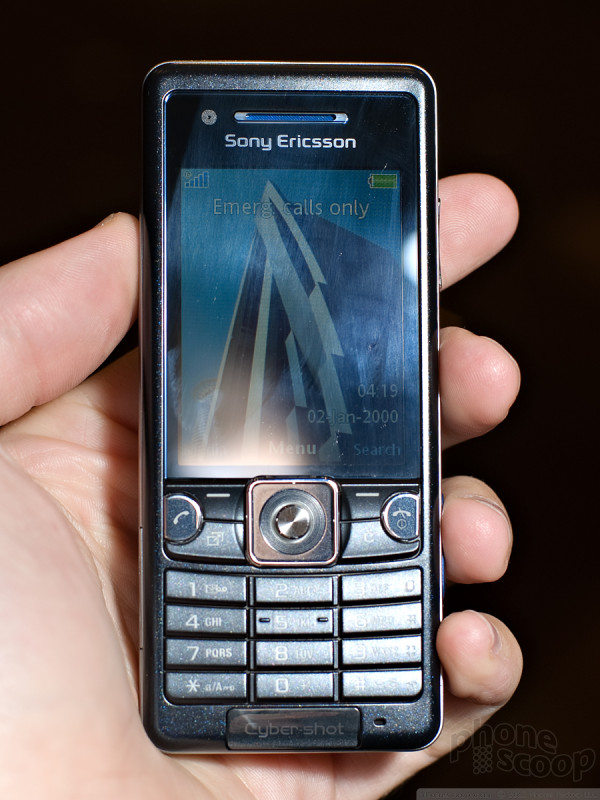







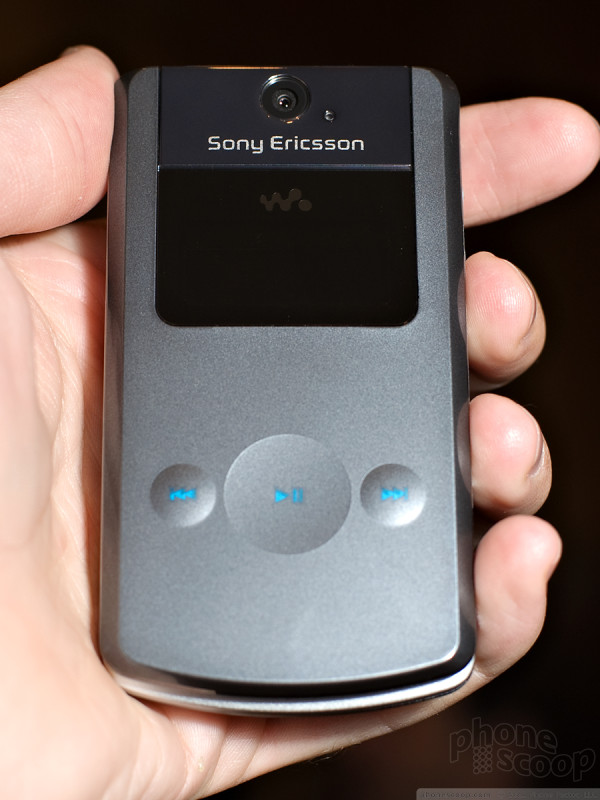










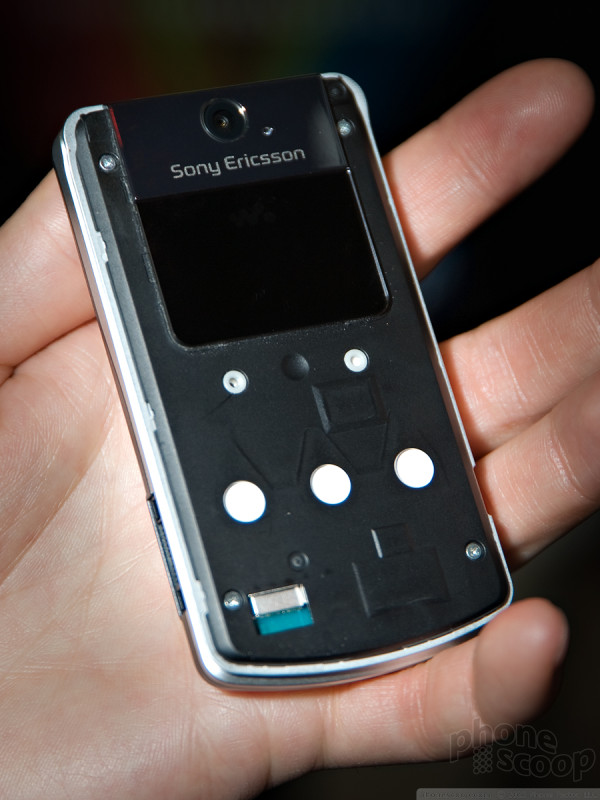



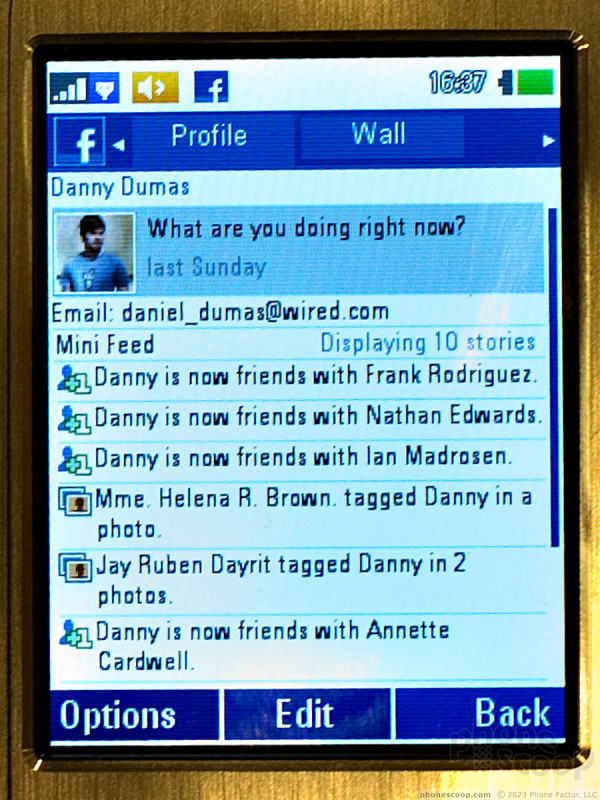














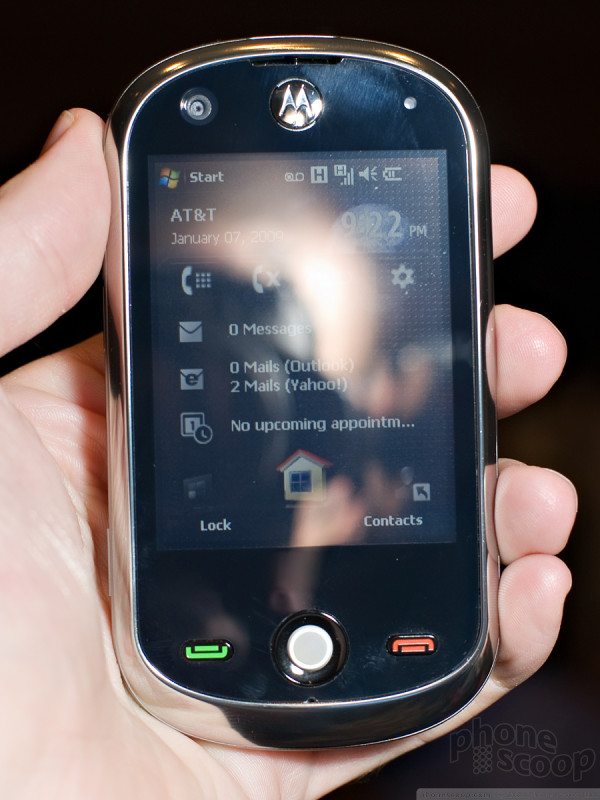















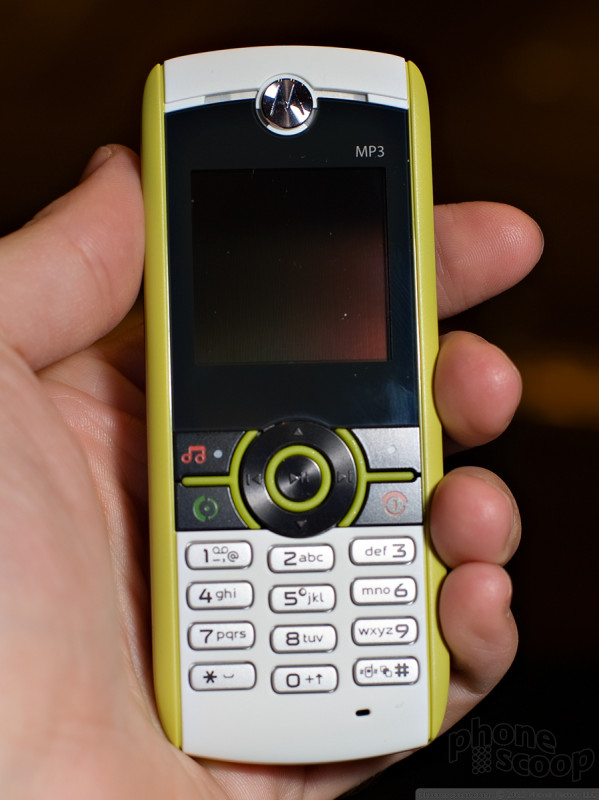




















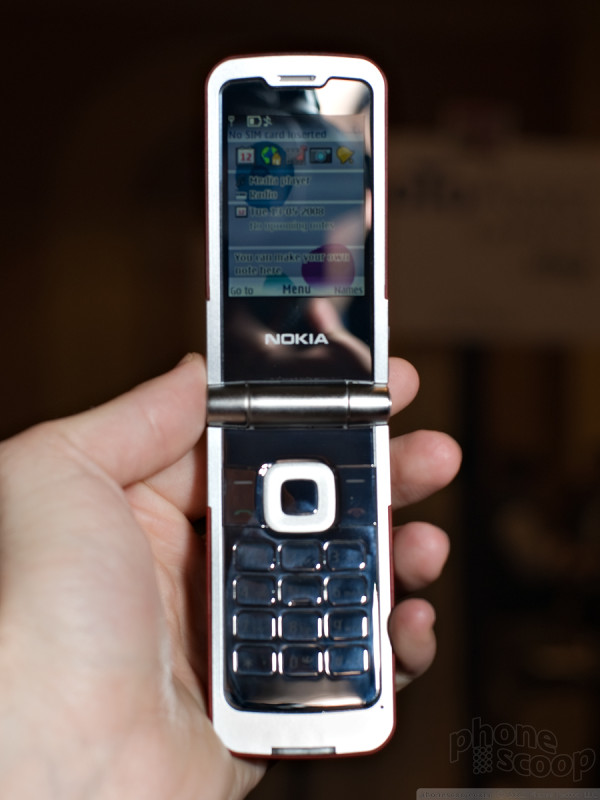









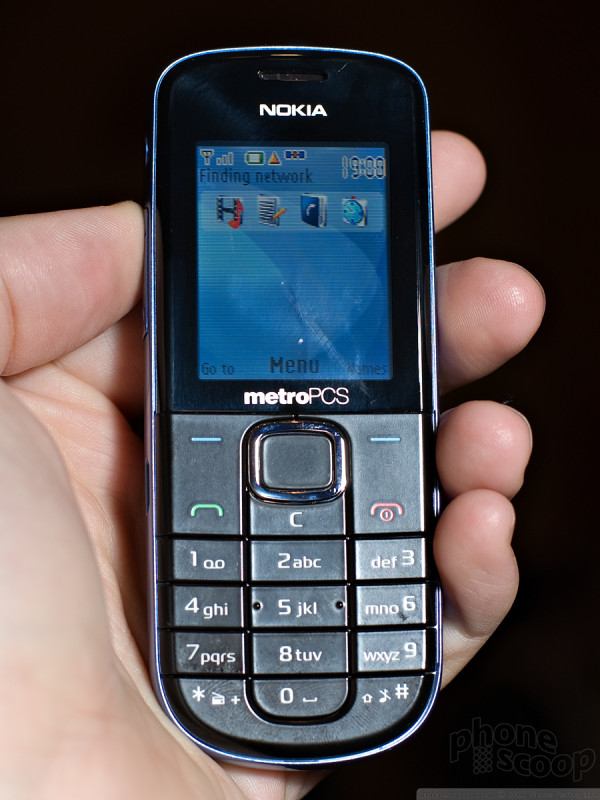















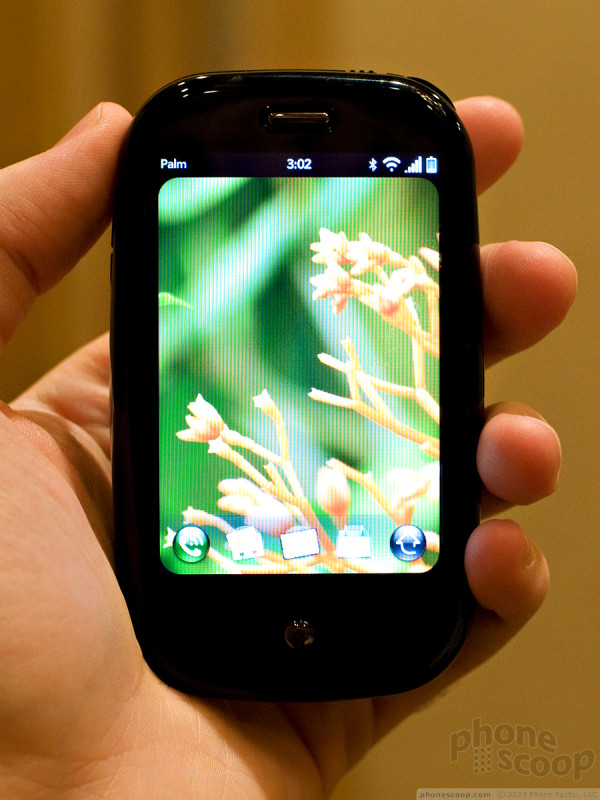












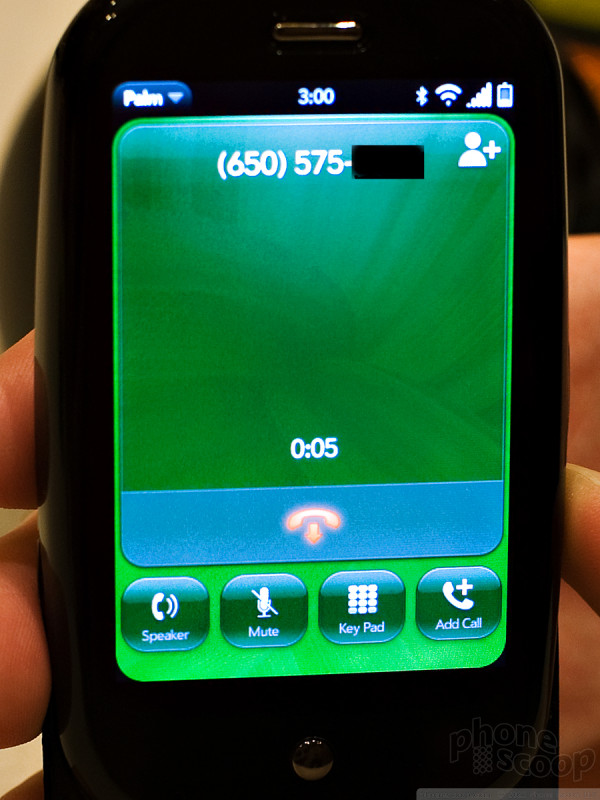

























































































































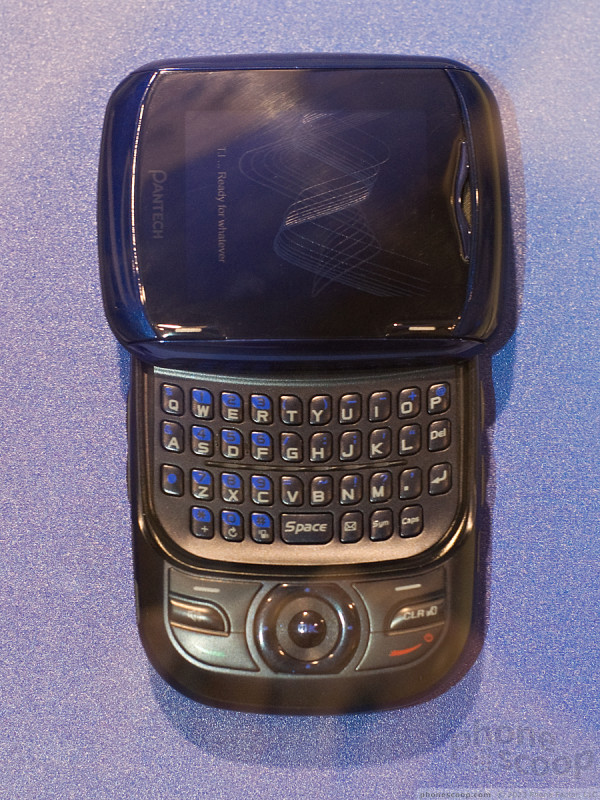











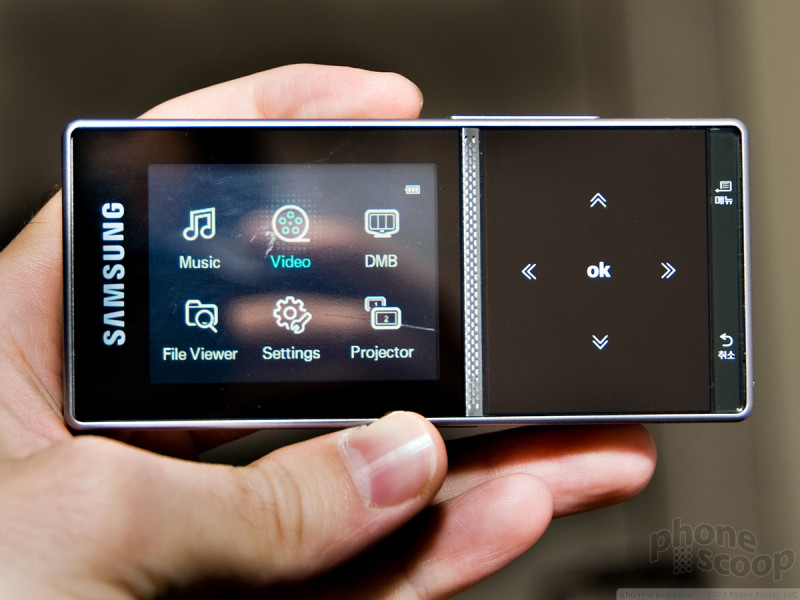







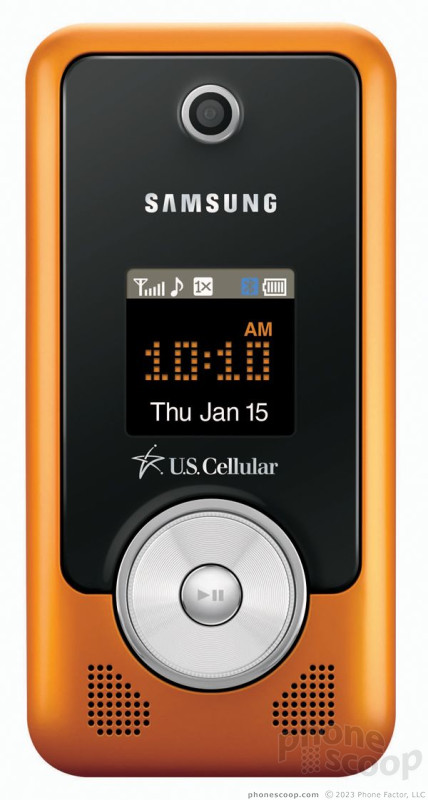





















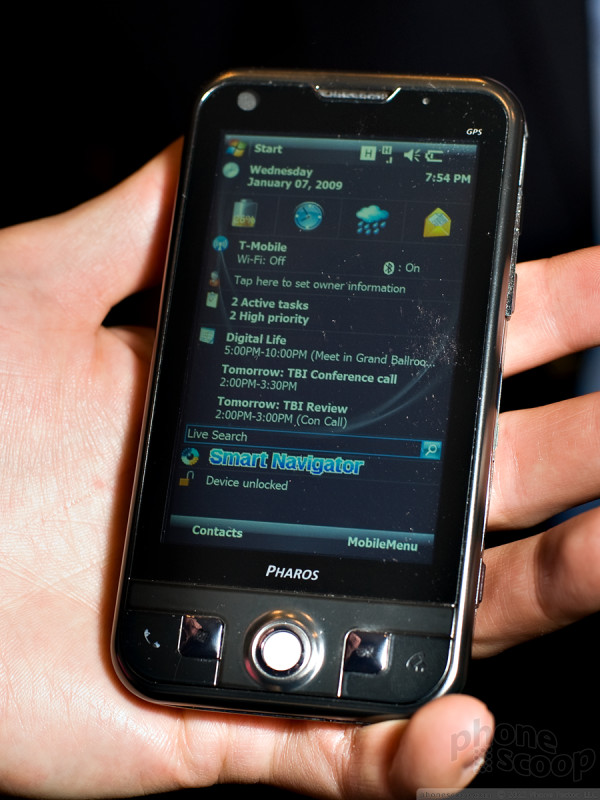




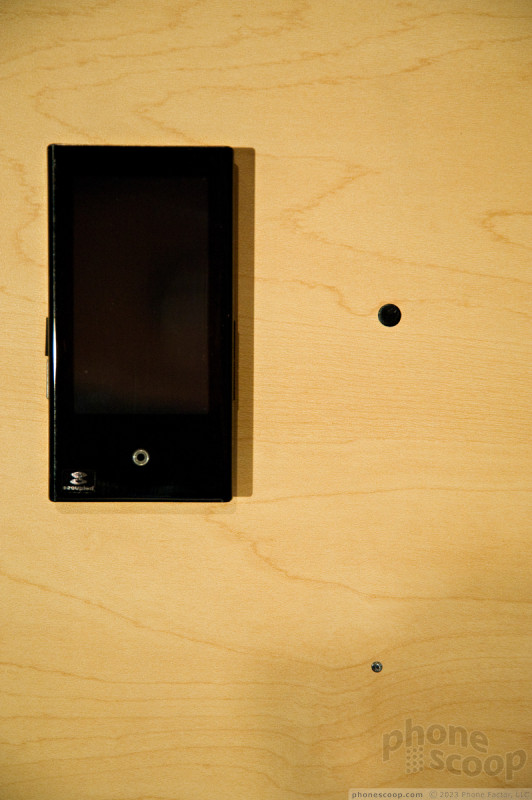





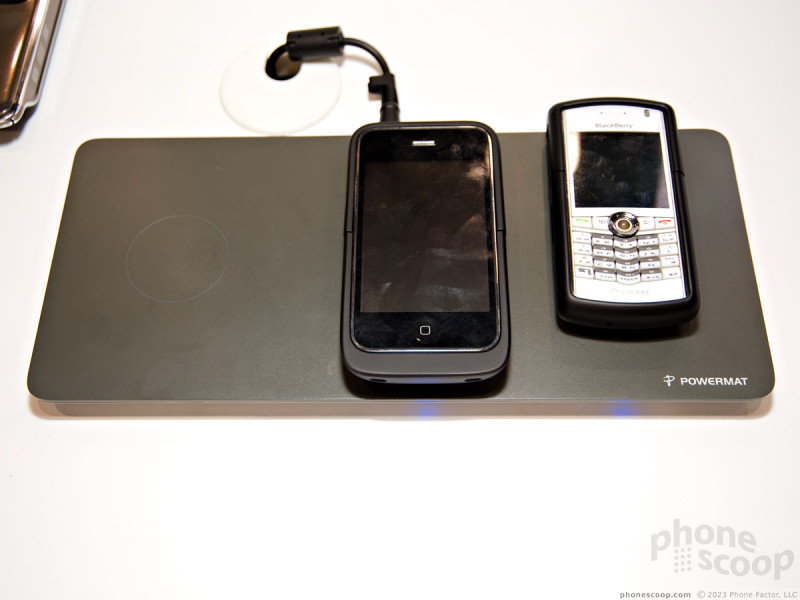


















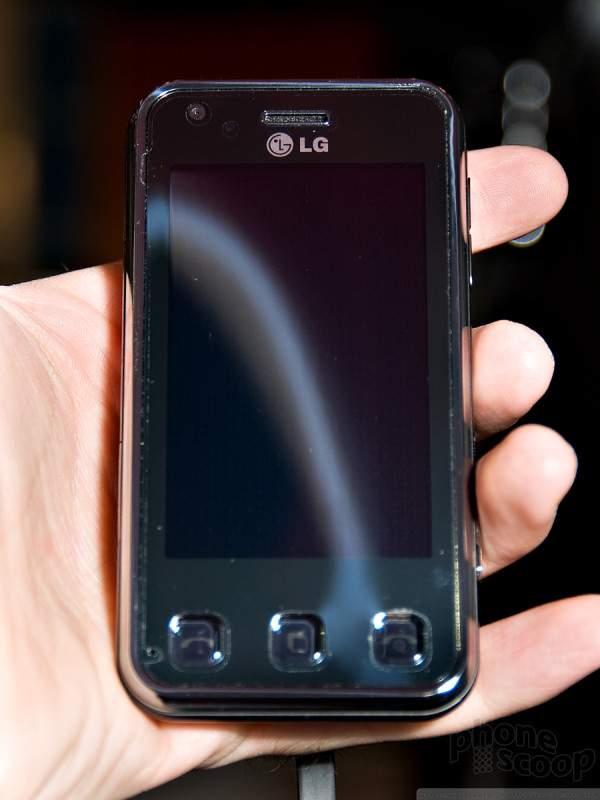







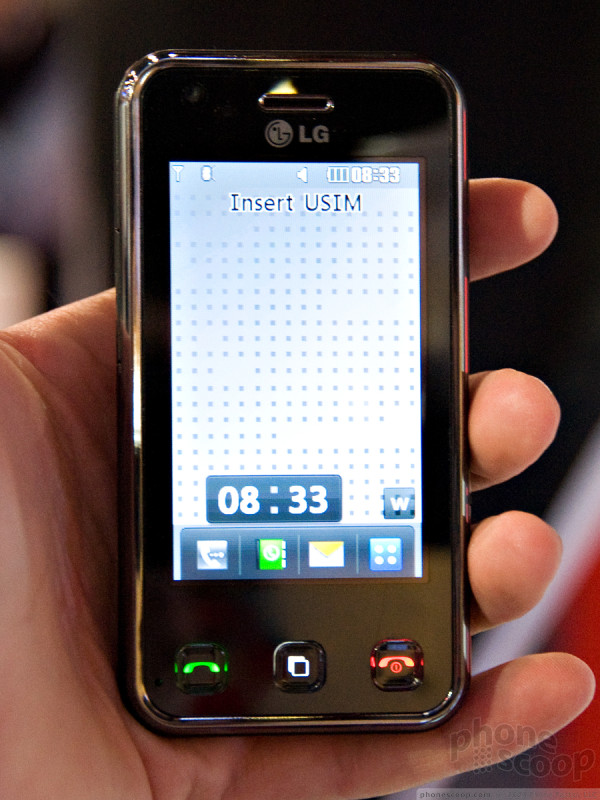








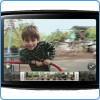 Video Tour: WebOS 1.4
Video Tour: WebOS 1.4
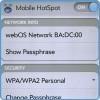 Video Demo: Palm Pre Plus Mobile Hotspot
Video Demo: Palm Pre Plus Mobile Hotspot
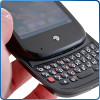 Review: Palm Pre
Review: Palm Pre
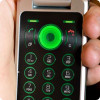 CTIA 2009
CTIA 2009
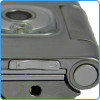 Review: Nokia 7510
Review: Nokia 7510
 Motorola VA76r Tundra
Motorola VA76r Tundra
 HTC Shadow (2009)
HTC Shadow (2009)
 Nokia 7510
Nokia 7510







